#deepseacreatures
Text

The deep sea cephalopod-jelly "Cyanea nozakii Cthylla". While also rumored to be a mythological cryptid, this photo was taken in the deepest depths of Marianas Trench in an earlier 2022 expedition by an experimental AiUV (Autonomous intelligent underwater vehicle).
#deepsea#creatures#cephalopod#cthulhu#jellyfish#abyss#marianastrench#lovecraftian#deepseacreatures#cryptid#mythlogical#auv#undiscovered#nationalgeographic#aiphotography#stablediffusion#stablediffusionart#mangorai#aiartdaily
214 notes
·
View notes
Text
Halitrephes maasi is a species of deep sea jellyfish that belongs to the family Halicreatidae. It is also known as the firework jellyfish because of its colorful and dazzling appearance. It can be found in various oceans around the world, but it is most recently observed near Mexico.
#halitrephesmaasi#fireworkjellyfish#deepseacreatures#oceanlife#underwaterphotography#sealife#ocean#underwater
8 notes
·
View notes
Text



Forgot to share these three pieces on here as I made them! Sorry about that! But here's three recent pieces!
#illlustration#coverart#scifi#fantasy#fantasyart#scifiart#dragon#bookcoverart#stansburyillustration#illustration#illustrator#urbanfantasy#tabletopminiatures#deepseacreatures#deepsea#seamonster
4 notes
·
View notes
Photo
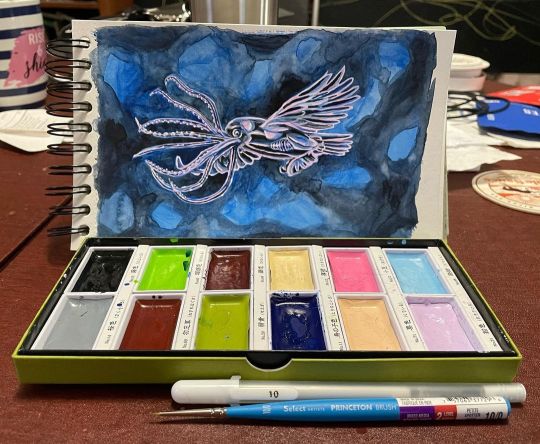
Adding details with #gellyroll pens to my #gansaitambi #painting. Both items are from @curio.lancaster What other small things should I paint in my 5 by 7 #watercolor pad… . . . #watercolorpainting #gansaitambiwatercolor #gellyrollpens #deepsea #deepseacreatures #squid #transparentsquid #bioluminescence #watercolorpainting https://www.instagram.com/p/ClbTJeCu41t/?igshid=NGJjMDIxMWI=
#gellyroll#gansaitambi#painting#watercolor#watercolorpainting#gansaitambiwatercolor#gellyrollpens#deepsea#deepseacreatures#squid#transparentsquid#bioluminescence
3 notes
·
View notes
Text
Bizarre Deep-Sea Creatures: Blob Sculpin
#AquaticBiodiversity#BizarreAnimals#BlobSculpin#DeepOcean#DeepSeaCreatures#DeepSeaExploration#ExoticWildlife#MarineBiology#MarineLife#NaturePhotography#OceanMysteries#Oceanography#StrangeCreatures#UnderwaterPhotography#WildlifePhotography
0 notes
Text
10 GREATEST Natural Wonders of The World (MUST SEE)
Embark on a breathtaking journey to discover the 10 greatest natural wonders of the world. From the majestic Aurora Borealis to the surreal landscapes of the Salar de Uyuni, this video is your ultimate guide to the planet’s most awe-inspiring phenomena. Join us as we explore the beauty and majesty of Earth’s greatest gifts.
#nature #freedocumentary #documentary
Disclaimer: We do not accept any…
View On WordPress
#amazingfacts#archaeologicalinvestigation#deepseacreatures#historicalmystery#marinebiology#naturalbeauty#oceananimalfacts#underwaterworld
0 notes
Text
Goblin Shark Merman
my OC Val Brennan
I tried a new rendering technique for this piece - what do you think?

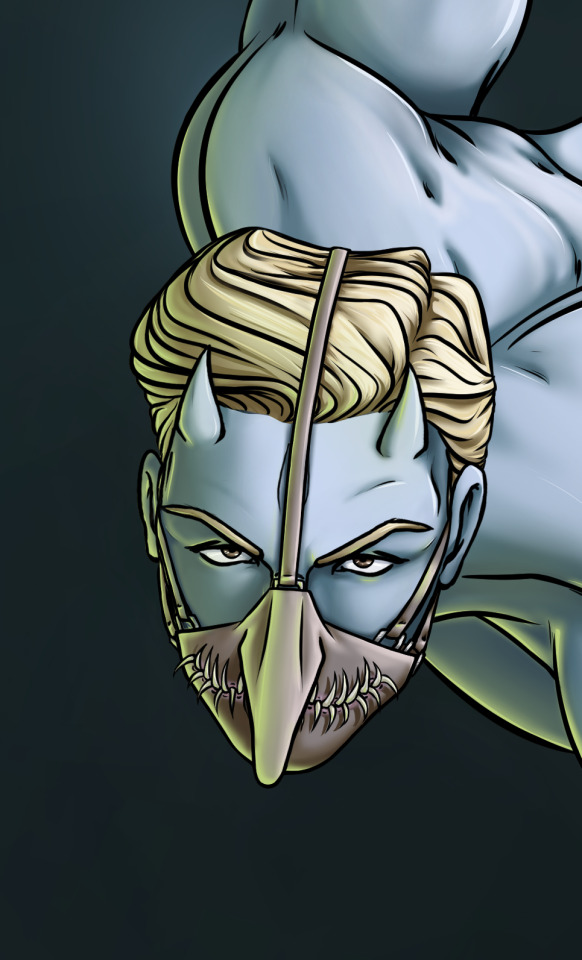
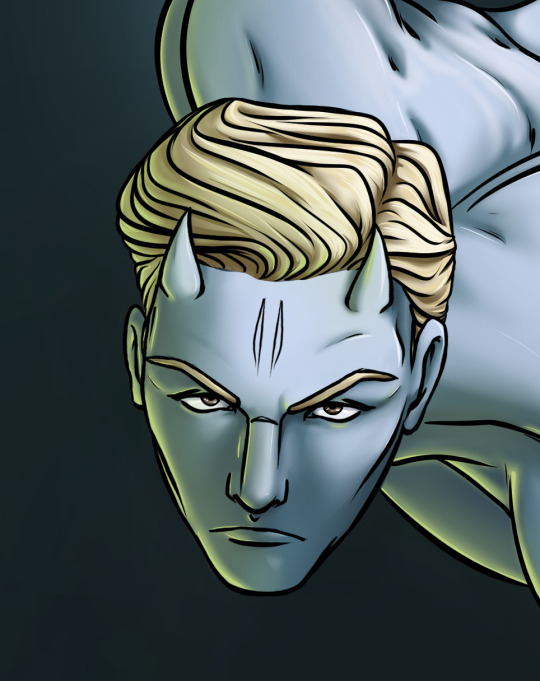

1 note
·
View note
Link
The vampire squid, also known as Vampyroteuthis infernalis, is a fascinating creature that lives in the deep sea. Despite its name, this squid is not a vampire and does not feed on blood. Instead, it has unique feeding habits that allow it to survive in the harsh conditions of the deep ocean. One of the most interesting things about the vampire squid is its feeding strategy. Unlike other squid species, which actively hunt for prey, the vampire squid is a passive feeder. It uses its long, sticky tentacles to capture small particles of organic matter that drift by in the water. This makes it an important part of the deep-sea food web. Another unique feature of the vampire squid's feeding habits is its ability to switch between different types of food sources. When there is a lot of organic matter in the water, it will use its tentacles to capture small particles. But when food is scarce, it can also feed on larger prey, such as small fish and crustaceans. This flexibility allows the vampire squid to survive in the unpredictable environment of the deep sea. 🦑🌊🐟1. The Vampire Squid: An Overview of its Unique Feeding HabitsThe vampire squid, also known as Vampyroteuthis infernalis, is a deep-sea creature with unique feeding habits. It has eight arms with webbing between them, making it look like an umbrella when it spreads them out. The vampire squid has two long filaments that it uses to capture food. It feeds on small planktonic organisms, such as copepods and krill. The vampire squid has a unique ability to turn itself inside out, exposing its spiny arms and webbing to deter predators. It can also emit bioluminescent flashes to confuse predators. The vampire squid has a slow metabolism and can survive long periods without food. It is found in the deep sea, between 600 and 900 meters, and is one of the few cephalopods that can tolerate low oxygen levels. The vampire squid is not a true squid or octopus and is the only living member of the order Vampyromorphida. It has a gelatinous body and lacks the ink sac found in squids and octopuses. The vampire squid is a fascinating deep-sea creature with unique adaptations for survival. 🦑🌊👻2. Understanding the Vampire Squid's Diet: A Deep-Sea Mystery UnveiledThe vampire squid is a deep-sea creature that has puzzled scientists for years. Its diet was a mystery until recently. They feed on small crustaceans, copepods, and other small animals. Their diet is mostly made up of marine snow, which is a mixture of dead plankton and other organic matter. They also consume fecal pellets, which are the waste products of other animals. The vampire squid has a unique feeding mechanism that allows it to capture food efficiently. They have two long feeding tentacles that are covered in small, sticky suction cups. These tentacles are used to capture prey and bring it to the squid's mouth. Their beak-like mouth is powerful enough to crush the shells of small crustaceans. Despite their name, vampire squid do not suck blood. They are called vampire squid because of their dark color and the webbing between their arms that looks like a cape. They are actually harmless to humans and other animals. They are an important part of the deep-sea ecosystem and help to recycle nutrients. Understanding the vampire squid's diet is important for understanding the deep-sea ecosystem. Scientists are still studying the vampire squid's feeding habits to learn more about this mysterious creature. They are also interested in how changes in the ocean environment may affect the vampire squid's diet and behavior. 🦑🧐🌊 3. The Role of Bioluminescence in the Vampire Squid's Feeding StrategyThe vampire squid uses bioluminescence to attract prey and avoid predators. It has light-producing organs called photophores on its body. The squid can control the intensity and duration of the light it emits. It uses this ability to create a "cloak of invisibility" to hide from predators. When hunting, the vampire squid uses bioluminescence to lure in small prey. It flashes bright lights to attract plankton and small fish. Once the prey is close enough, the squid extends its long arms to capture it. This strategy allows the vampire squid to conserve energy while still obtaining food. Bioluminescence also plays a role in the vampire squid's reproduction. During mating, the squid uses bioluminescent displays to attract a mate. The male will flash a series of lights to signal his interest. If the female is receptive, she will respond with her own display. The vampire squid's use of bioluminescence is a fascinating adaptation that allows it to survive in the deep ocean. 🦑🐟🌊🔦4. The Vampire Squid's Feeding Behavior: A Study of its Prey SelectionThe vampire squid is a unique species that feeds on a variety of prey. It primarily feeds on small crustaceans and copepods. It also consumes small fish and other squid species. Its feeding behavior involves using its long arms to capture prey. Research has shown that the vampire squid is a selective feeder. It prefers prey that is smaller in size and easier to catch. It also tends to avoid prey that is too large or too fast-moving. Its feeding behavior is influenced by factors such as water temperature and prey availability. The vampire squid's feeding behavior is also influenced by its habitat. It is typically found in deep-sea environments with low levels of light. Its feeding behavior is adapted to this environment, with the squid using bioluminescence to attract prey. It also has a unique feeding mechanism that allows it to consume prey in a way that minimizes energy expenditure. Overall, the vampire squid's feeding behavior is a fascinating area of study. Understanding its prey selection can provide insights into the ecology of deep-sea environments. Further research is needed to fully understand the complex feeding behavior of this unique species. 🦑🔍🍴5. The Importance of Nutrient Cycling in the Vampire Squid's EcosystemThe vampire squid plays a crucial role in its ecosystem by participating in nutrient cycling. It consumes dead organisms and recycles nutrients back into the food web. This process benefits other organisms by providing them with essential nutrients. Without nutrient cycling, the ecosystem would suffer from nutrient depletion. The vampire squid's unique adaptations allow it to survive in low-oxygen environments. It has a low metabolic rate and can go without food for long periods. Its bioluminescent organs help it attract prey and avoid predators. These adaptations make the vampire squid an important player in its ecosystem. Human activities, such as overfishing and pollution, can disrupt nutrient cycling in the vampire squid's ecosystem. Reduced populations of vampire squid can lead to nutrient imbalances and ecosystem collapse. It's essential to protect the vampire squid and its habitat to maintain a healthy ecosystem. Conservation efforts can ensure nutrient cycling continues to benefit the ecosystem. The vampire squid's role in nutrient cycling highlights the interconnectedness of all organisms in an ecosystem. Each species plays a unique role in maintaining the balance of the ecosystem. By understanding the importance of nutrient cycling, we can better protect and conserve our oceans. Let's work together to ensure the vampire squid and its ecosystem thrive. 🦑🌊 6. The Impact of Climate Change on the Vampire Squid's Feeding HabitsClimate change is affecting the feeding habits of the vampire squid, a deep-sea creature that lives in the oxygen minimum zone. The oxygen minimum zone is shrinking due to warming waters, reducing the vampire squid's habitat. As the ocean becomes more acidic, the squid's food sources, such as krill and copepods, are declining. Changes in ocean currents are also affecting the distribution of the squid's prey. The vampire squid is adapting by changing its diet to include gelatinous organisms, such as jellyfish and salps, which are more abundant in warmer, more acidic waters. This shift in diet may have consequences for the squid's growth and reproduction. It may also impact the food web, as gelatinous organisms are less nutritious than the squid's previous food sources. Overall, is a concerning example of the far-reaching effects of global warming on marine ecosystems. 🌊🦑🌡️🌍7. Vampire Squid Feeding Habits and their Evolutionary SignificanceVampire squid have unique feeding habits that have evolved over time to adapt to their deep-sea environment. They use their long arms to capture small prey such as copepods and krill. They also have bioluminescent organs that attract prey and confuse predators. Their diet consists of both planktonic and detrital organisms. Their feeding habits have significant evolutionary implications as they have adapted to survive in an environment with limited food resources. Their ability to switch between planktonic and detrital diets allows them to survive in times of scarcity. Their bioluminescent organs may have evolved as a defense mechanism against predators. Overall, their unique feeding habits have allowed them to thrive in the deep-sea environment. 🦑🦷🌊 In conclusion, the Vampire Squid is a unique and fascinating creature with distinctive feeding habits. Its diet consists of small planktonic animals, such as copepods and krill, which it captures with its long, slender arms. The squid's bioluminescent organs also play a crucial role in attracting prey and avoiding predators. Despite its ominous name, the Vampire Squid is not a bloodsucker and poses no threat to humans. Instead, it plays a vital role in the ocean's food chain, serving as prey for larger predators such as whales and sharks. Its ability to survive in the deep, dark waters of the ocean is a testament to its adaptability and resilience. Overall, the Vampire Squid is a fascinating and important creature that deserves our attention and protection. By studying its feeding habits and behavior, we can gain a better understanding of the complex ecosystem that exists beneath the waves 🦑🌊🐟. https://fastdiet.net/vampire-squid-feeding-habits/?_unique_id=64882b6b897b7
#Uncategorised#Bioluminescence#Deepseacreatures#Marinebiology#Oceanography#Vampiresquiddiet#aiomatic_0
0 notes
Video
youtube
This Deep Water Diver Made A SHOCKING Discovery
#youtube#deepsea#underwater#shocking#discoveries#deepseacreatures#shockingvideos#crazyvideos#mindboggler
0 notes
Photo
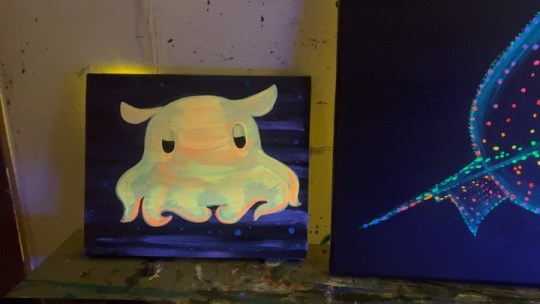
Made these guys at the mall today. Came out ok…. For having no black light there. . . #dumbooctopus#octopus#deepseacreatures #blacklightart #sealife #reef2reef #aquarium #saltwateraquarium (at Ballston Spa, New York) https://www.instagram.com/p/ClsI9lKLCjh/?igshid=NGJjMDIxMWI=
0 notes
Text

Here's a giant kaiju Octopus I made for my Aunt for her birthday, That she's going to make a tattoo of. I wish I could have gave it more detail, but this is that best I got!
#clipstudiopaint#digitalart#kaiju#kaijuart#octopus#giantoctopus#monster#giantmonsters#seamonsters#deepseacreatures#birthdaygift
0 notes
Text

The deep sea cephalopod-jelly "Cyanea nozakii Vampyropoda". While rumored to be a mythological cryptid, this photo was taken in the deepest depths of Marianas Trench in early 2023 by an experimental AiUV (Autonomous intelligent underwater vehicle).
#deepsea#creatures#cephalopod#jellyfish#abyss#marianastrench#deepseacreatures#cryptid#mythlogical#auv#undiscovered#nationalgeographic#aiphotography#stablediffusion#stablediffusionart#mangorai
58 notes
·
View notes
Photo
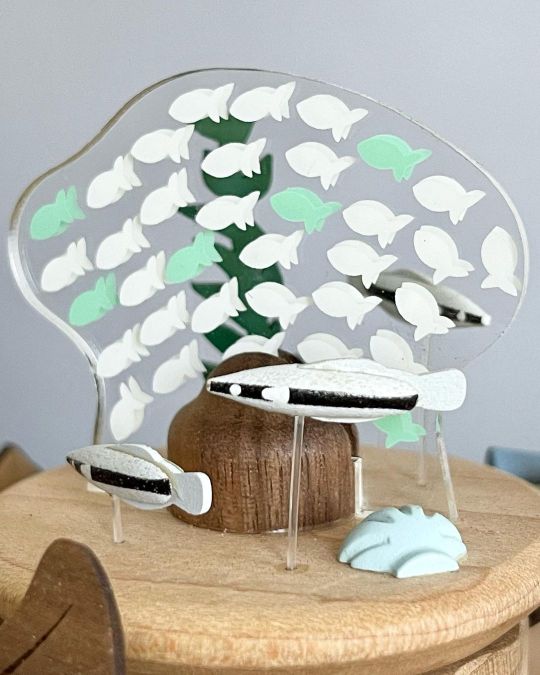
Are you one who finds the ocean 🌊fascinating? I find the deep-sea discoveries and sightings by the researchers amazing! 🐟Did you know Scientists estimated about one million species of animals live in the ocean? The most recent deep-sea discovery by scientists is a 3-foot-long mammoth task from an extinct Columbian mammoth 10,000 feet beneath the ocean in July 2021. Can you name some unique sea creatures? 🐟If you're an ocean lover, you got to check out our best seller of all time! Let's dive into the deep blue sea to explore the underworld with this lovely ocean-themed music box collection. 🔗Link in bio to see our wide variety of music boxes. #sealife #oceanlovers #ocean #deepseacreatures #sea #deepsea #seacreatures #seaanimals #wateranimals #fish #fishspecies #sharks #stingrays #deepocean #blueocean #woodenmusicbox #musicbox #windupbox #handcrafted #heirloom #jackandjill (at Los Angeles, California) https://www.instagram.com/p/CfKrG_-vT9G/?igshid=NGJjMDIxMWI=
#sealife#oceanlovers#ocean#deepseacreatures#sea#deepsea#seacreatures#seaanimals#wateranimals#fish#fishspecies#sharks#stingrays#deepocean#blueocean#woodenmusicbox#musicbox#windupbox#handcrafted#heirloom#jackandjill
0 notes
Photo

Deep Sea Squid Owl #watercolor #painting #originalart is $50 Prints and other items available on the following sites: Society6.com/raliz Teepublic.com/user/raliz Redbubble.com/people/raliz #deepsea #deepseacreatures #squid #deepseasquid #transparentsquid #owl #art https://www.instagram.com/p/Cl_dE9Eu25v/?igshid=NGJjMDIxMWI=
#watercolor#painting#originalart#deepsea#deepseacreatures#squid#deepseasquid#transparentsquid#owl#art
0 notes
Photo

Been working on this angler dragon hybrid for the #aceincredibleilluminations market soon. I’ve popped it down for now in fear of ruining it. #pyrography #pyrographers #pyrographyart #deepsea #deepseacreatures #dragon #dragonart #handmade #handmadeuk #anglerfish #acegifts #woodburning #woodart #coathook #staffordshireartists #madeinstaffordshire #folksy #folksyshop #folksyseller #folksypyrography #sarahbell #sarahdesigns #sarahdesignsuk #sarahspyrography (at Endon) https://www.instagram.com/p/Cd3qkO9j3CV/?igshid=NGJjMDIxMWI=
#aceincredibleilluminations#pyrography#pyrographers#pyrographyart#deepsea#deepseacreatures#dragon#dragonart#handmade#handmadeuk#anglerfish#acegifts#woodburning#woodart#coathook#staffordshireartists#madeinstaffordshire#folksy#folksyshop#folksyseller#folksypyrography#sarahbell#sarahdesigns#sarahdesignsuk#sarahspyrography
0 notes
Text
10 Most DANGEROUS Beaches In The World (AVOID THESE) #nature #dangerous #dangerousbeaches
Today, we’re uncovering the ’10 Most DANGEROUS Beaches In The World (AVOID THESE)’. From hidden underwater currents to unexpected wildlife encounters, these beaches are not your typical vacation spots.
from Exploring Creation Vids https://www.youtube.com/watch?v=KRwkQR4_1Fs
View On WordPress
#amazingfacts#archaeologicalinvestigation#deepseacreatures#historicalmystery#marinebiology#naturalbeauty#oceananimalfacts#underwaterworld
0 notes